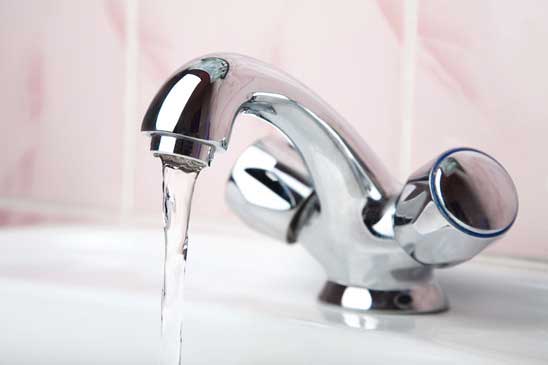While choosing a new bathroom faucet might seem straightforward, in reality there are several factors to consider. Over time, faucets wear down, so replacing anything outdated or broken will not only enhance the room’s appearance, but also make sinks and tubs more functional.
Generally, it is easy to determine if a faucet needs to be replaced. The finish, regardless of material, will become dull, lifeless, and often pitted. In addition, a faucet will not allow proper water flow. However, you may decide to replace a faucet because it is out of style. No matter the reason for replacing a faucet, it is important to choose the right one.
Choices of Materials and Finishes
Although style, brand, and functionality are important, experts recommend starting the selection process by learning about available materials and finishes. As far as materials, there are really just two choices: plastic and brass. Although both materials offer benefits, brass is the better choice simply because this metal is extremely tough and easily accommodates extreme water temperatures.
The bigger decision has to do with the finish. There are advantages to each option, although usually people choose a faucet finish that complements the bathroom. In other words, a different finish is recommended for a rugged-style room than one with a more contemporary look and feel. The following are the most popular finishes to consider:
- Bronze
- Chrome
- Copper
- Gold
- Metallic
- Non-Metallic
- Nickel
- Pewter
- Platinum
- Stainless Steel
For all finishes, there are additional options, including brushed, polished, and satin. While brushed faucets offer Old World charm and polished faucets are more modern, a satin faucet typically works well with any décor. For non-metallic finishes, additional choices include black, white, and tan or biscuit color with a choice of epoxy or enamel.
The most popular finish options include nickel, chrome, stainless steel, and bronze.
- Nickel – This is the first choice for many people. Nickel is durable and scratch resistant, and water spots do not show up on this finish as much as they do on other shiny faucets. Nickel has a somewhat softer look that blends with any bathroom. While satin tends to be the top choice for nickel, brushed nickel is also popular.
- Chrome – This finish is highly durable, easy to maintain, and cost-efficient. Brushed chrome has a more muted tone, while polished chrome is shiny and bright.
- Stainless Steel – This is similar to chrome in that it is durable and easy to maintain. Although stainless steel matches virtually any bathroom, this tends to be a more expensive option.
- Bronze – In the past several years, oil-rubbed bronze faucets have grown in popularity. Compared to a brushed bronze finish, oil-rubbed bronze is darker. Depending on the exact brand, the actual shade will vary. Typically, these faucets look best in traditional, country, rustic, and Old World rooms.
Choosing the Right Size
Once you have chosen the material and finish, the size of the new faucet needs to be determined. For a bathroom sink, one of the easiest methods involves taking the old faucet out and then measuring the distance between the holes in the sink itself. Usually, smaller sinks are manufactured with three holes that have a 4-inch span, while some have holes with a distance of 6, 8, and 12 inches.
This information is important, because it dictates the type of configuration needed for the new faucet. As an example, a sink with two holes and a 4-inch spread will usually need a faucet with just one handle, although there are some two-handle faucets that would fit. In comparison, larger spreads accommodate faucets with separate handles.
Regarding the size of a new faucet for a bathtub or shower, it is best to stick with the same style already installed. This means a single-handle faucet should be replaced with a new single-handle faucet and a two-handle with a two-handle faucet. Keep in mind that the width between holes for tubs is usually consistent, but American Standard and Kohler have a spread drilled into the porcelain that measures 3 5/8 inches.
Going with the Best Style
Finally, the style of the new faucet must be decided. Professional plumbers generally recommend a one-handled or lever faucet when there are older people or children in the home, simply because these are easier to use. For someone with a disability, round knobs work best, because they close off the water valve in only a quarter of a turn.
For a bathtub, if the faucet configuration is separate, then virtually any type of handle or lever would work. However, a lever for a shower tends to be easier to use compared to a two-handle faucet design.
